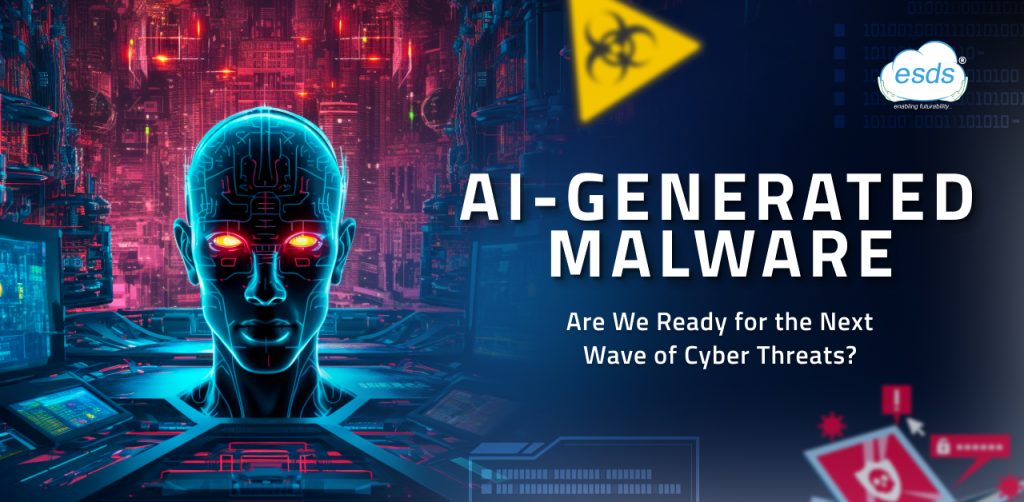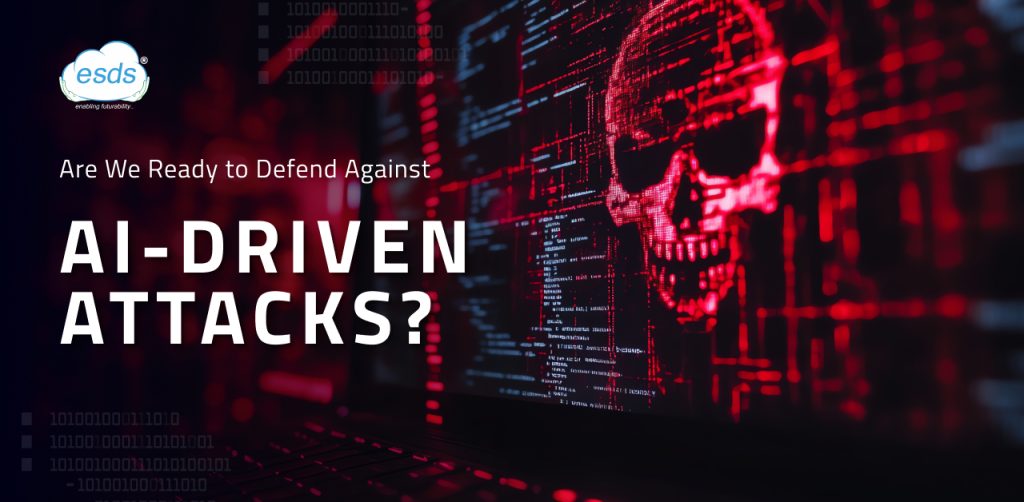AI-Generated Malware: Are We Ready for the Next Wave of Cyber Threats?

Artificial Intelligence (AI) is reshaping every facet of our digital world—driving innovation, automating processes, and, unfortunately, amplifying cyber threats.
Among the most concerning developments is the rise of AI-generated malware. Yes, malware crafted by AI itself, which takes the complexity and danger of cyberattacks to unprecedented levels. As cybercriminals leverage AI to create more advanced, evasive, and damaging attacks, organizations must ask themselves a critical question: Are we truly prepared for this next wave of cyber threats?
The Rise of AI in Cybercrime
AI has revolutionized cybersecurity, empowering defenders with smart algorithms that can identify anomalies, predict attacks, and react in real time. But cybercriminals, ever-adaptive and opportunistic, are using the same technology for nefarious purposes. AI-generated malware is the latest and most dangerous tool in their arsenal. With AI’s help, malware can be written faster, be more resilient to detection, and adjust its behavior dynamically to avoid traditional defenses.
This isn’t speculative fiction; it’s happening now. In April 2024, cybersecurity firm Proofpoint identified a Chinese cyberespionage group, TA547 (Scully Spider), using AI to develop PowerShell loaders for malware chains. Similarly, HP Wolf Security uncovered AI-generated malware scripts targeting users in France in September of the same year. These are no isolated incidents; the threat landscape is rapidly evolving.
AI-Generated Malware: What Makes It So Dangerous?
AI-generated malware is alarming for several reasons. First, AI can automate much of the manual work traditionally required to create malware. Previously, a hacker would need deep technical expertise to craft malicious code. Today, with AI-powered tools like ChatGPT, anyone with basic programming knowledge can request code that replicates harmful functionalities. This lowers the barrier to entry for cybercriminals and increases the frequency and sophistication of attacks.
Second, AI-generated malware is often polymorphic, meaning it can change its signature to evade detection systems. Traditional antivirus programs rely on signature-based detection, which becomes obsolete against constantly evolving threats. By using AI to dynamically alter the malware’s code, cybercriminals can effectively bypass defenses that have been used for years.
Moreover, AI-driven cyberattacks aren’t just limited to malware. Phishing campaigns powered by AI are becoming increasingly convincing, using natural language processing to craft highly personalized and targeted emails. These AI-generated messages can be indistinguishable from legitimate communications, making them all the more dangerous.
Real-World Examples: The Threat Is Already Here
The implications of AI in cybercrime are not theoretical. One of the most significant cases involves the Chinese cyber-espionage group Sweetspecter, which was documented using AI-powered reconnaissance to identify vulnerabilities. They launched spear-phishing attacks against Asian governments and even targeted OpenAI itself, sending malicious ZIP files disguised as customer support requests. Once opened, the files triggered a malware infection chain, unleashing a sophisticated Remote Access Trojan (RAT).
Even more worrying is how AI-generated malware is targeting critical infrastructure. In another case, the Iranian group CyberAv3ngers used ChatGPT to identify default credentials for industrial routers and PLCs (programmable logic controllers). These devices control vital manufacturing and energy infrastructure, highlighting the devastating potential of AI-assisted cyberattacks.
Are We Ready to Defend Against AI-Driven Attacks?

The rise of AI-generated malware signals a pivotal moment for the cybersecurity industry. Traditional security measures—firewalls, antivirus software, even human-driven threat analysis—are becoming increasingly inadequate against this new breed of cyber threat. AI has changed the game, and defenders must respond in kind by embracing AI-powered cybersecurity solutions.
The future of cyber defense lies in adopting advanced AI-driven tools that can analyze vast amounts of data, detect anomalous behavior, and adapt as threats evolve. For example, AI can identify when a piece of malware is attempting to alter its signature or evade detection, enabling faster response times and more robust defenses.
Organizations must also invest in next-generation Security Operations Centers (SOC) that use AI to monitor, detect, and respond to threats in real-time. These AI-powered SOCs can process huge volumes of data, identify patterns, and mitigate risks before they escalate into full-blown attacks. With AI on both sides of the battlefield, it’s critical for defenders to leverage the same technology as cybercriminals—if not more effectively.
Conclusion
ESDS SOC Services to Defend Against the Future
With the increasing trend of cybercriminals using AI to create sophisticated malware and frame a phishing scam, the best course of action would be to combat that threat with the same cutting-edge technology. Businesses will have to take up AI-driven cybersecurity measures in order to stay in the advanced stage of combating threats. ESDS Software Solutions has provided an advanced SOC driven by AI and gives assurance to businesses to defend against AI-generated malware, phishing attacks, and other cyber threats.
The ESDS SOC services continuously monitor your surroundings through machine learning and analytics to detect threats early before they can cause damage. Our AI Security Operations Center secures your system against unidentifiable malware and phishing emails generated by AI. ESDS gets your organization even better prepared for a future where AI-driven cyber threats are at an all-time high through continuous real-time threat detection, automated responses, and a proactive defense strategy.
Are you ready for the future change in cybersecurity? This is where ESDS SOC comes to your rescue to save your digital assets from AI-based cyber threats.
- The Impact of AI on Colocation Services - February 13, 2025
- Colocation Data Centers the Backbone of Modern Business Data Management - November 12, 2024
- AI-Generated Malware: Are We Ready for the Next Wave of Cyber Threats? - October 23, 2024
